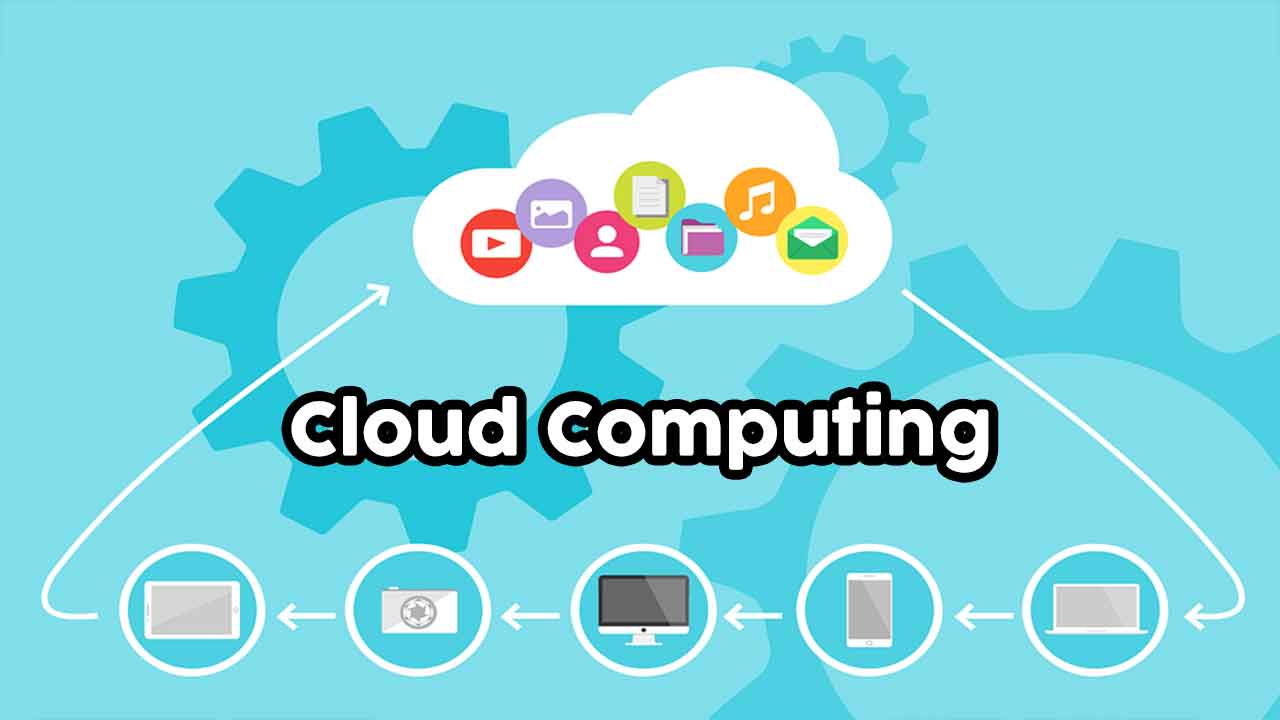What is cloud computing and how useful is it? What is Cloud Computing?
Cloud computing is a general term for anything that involves providing hosted services over the Internet. These services are broadly divided into three categories: Infrastructure-as-a-Service (IaaS), Platform-as-a-Service (PaaS) and Software-as-a-Service (SaaS) . The name cloud computing is inspired by the cloud symbol that is often used to represent the Internet in flowcharts and diagrams.
If you are unsure about what cloud computing is, you are probably among 95% of those who are already using cloud services, such as online banking and social networks, but don’t realize it.
“Cloud ” is a set of different types of hardware and software that work collectively to deliver many aspects of computing to the end-user as an online service.
Cloud computing is the use of hardware and software to deliver a service over a network (usually the Internet). With cloud computing, users can access files and use applications from any device that can access the Internet.
An example of a cloud computing provider is Google’s Gmail. Gmail users can access Google-hosted files and applications via the Internet from any device.
How is computing from the cloud different from computing my PC hard drive?
Unlike traditional computing, where data is stored on your PC’s local hard drive, data in the cloud is stored on multiple physical and/or virtual servers that are hosted by a third-party service provider. An example of a cloud computing file storage provider is DropBox. Dropbox files can be accessed from any device via the Internet.
What are Public and Private Cloud? What is Public and Private Cloud?
Cloud service private or public (Private or Public)can be. A public cloud sells services to anyone on the Internet. (Currently, Amazon Web Services is a large public cloud provider). A private cloud is a proprietary network or data center that supplies hosted services to a limited number of people. Private or public, cloud computing aims to provide easy and scalable access to computing resources and IT services.
A public cloud is based on a standard cloud computing framework that includes files, applications, storage, and services available to the public via the Internet. Gmail is an example of a public cloud.
A private cloud is comprised of files, applications, storage and services, implemented and protected within a corporate firewall under the control of the corporate IT department. An example of a private cloud would be a company that uses Microsoft Exchange because Microsoft Exchange can only be accessed by authorized users through a secure VPN connection.
What are some common cloud services and companies?
Some common services hosted in the cloud, such as Hosted Desktop, are provided by companies such as AT&T Hosted email, such as Gmail, provided by companies such as Google cloud storage, provided by companies such as Dropbox; and streaming music, provided by companies like Spotify. These services, applications and files are stored in the cloud and can be accessed by users through any device.
Do I need cloud computing?
The cloud computing market continues to grow from year to year as companies are becoming more aware of the cost saving benefits of adopting the cloud.
With hardware services, companies are able to use a cloud service provider’s equipment (storage, hardware, servers, and networking components) instead of spending large amounts of capital on equipment.
With software services, companies’ applications are hosted by a cloud service provider and costly over the network, saving maintenance costs.
Are my files safe in the cloud?
While no storage solution is 100% secure, cloud storage providers can provide a safer and more accessible place for companies to store data than traditional computing methods.
Depending on the service contract, duplicate copies of companies’ data may be stored on servers located in different geographies and protected by a backup power supply in the event of a disaster.
Today, many companies are moving towards the hybrid cloud computing model. With this model, companies are given the flexibility to securely store sensitive data in the private cloud while storing public data in the public cloud. Both infrastructures are maintained as separate, unique entities.
The cloud service has three distinctive features that set it apart from traditional web hosting. It is typically sold on a minute or hourly basis; It is a flexible service – the user can use the minimum number of services depending on his demand in the time taken; And the service is entirely managed by the provider (the consumer needs nothing but a personal computer and Internet access). Improved access to high-speed Internet along with significant innovations in virtualization and distributed computing has fueled the interest of people in cloud computing.
Cloud computing deployment model
Private cloud services are provided from a business’s data center to internal users. This model provides the versatility and convenience of the cloud while preserving the management, control, and security for local data centers. Internal users may or may not be billed for services through IT chargebacks. Common private cloud technologies and vendors include VMware and OpenStack.
In the public cloud model, the third-party cloud service provider provides cloud service over the Internet. Public cloud services are typically sold on a minute or hourly basis, although long-term commitments are available for many services. Customers only pay for the CPU cycle, storage or bandwidth that they use. Leading public cloud service providers include Amazon Web Services (AWS), Microsoft Azure, IBM, and Google Cloud Platform.
A hybrid cloud is a combination of public cloud services and an on-premises private cloud. Companies can run mission-critical workloads or sensitive applications on the private cloud and use the public cloud as demand grows or to handle more workloads. Hybrid cloud aims to create an integrated, automated, scalable environment with the infrastructure provided by the public cloud.
Cloud computing features and benefits
Cloud computing boasts many attractive benefits for businesses and users. There are five main advantages of cloud computing:
- Self Service Provisioning: End users can calculate on demand for almost any type of workload. It eliminates the need for IT administrators to manage and manage computer resources.
- Flexibility: Companies can increase or decrease computing requirements as per their requirement. This has reduced the investment of companies on infrastructure.
- Pay per use: Users have to pay only for the resources and workloads that they use.
- Workload flexibility: Cloud service providers often deploy additional resources to ensure flexible storage and keep significant workloads of users across multiple global regions running.
- Migration flexibility: Organizations can move some workloads from one cloud to different cloud platforms as needed or use new services, allowing them to make better cost savings.
Types of cloud computing services
Although cloud computing has changed over time, it is divided into three broad service categories: infrastructure as a service (IaaS), platform as a service (PaaS) and software as a service (SaaS). SaaS, PaaS, and IaaS are just three ways to describe how you can use the cloud for your business.
- IaaS: Cloud-based services, pay-as-you-go services such as storage, networking, and virtualization.
- SaaS examples: BigCommerce, Google Apps, Salesforce, Dropbox, MailChimp, ZenDesk, DocuSign, Slack, Hubspot.
- PaaS: Hardware and software tools available on the Internet.
- PaaS examples: AWS Elastic Beanstalk, Heroku, Windows Azure (mostly used as PaaS), Force, OpenShift, Apache Stratos, Magento Commerce Cloud.
- SaaS: Software that is available on the Internet through a third-party.
- IaaS examples: AWS EC2, Rackspace, Google Compute Engine (GCE), Digital Ocean.
- On-premises: Software that is installed in your place of business or building.








